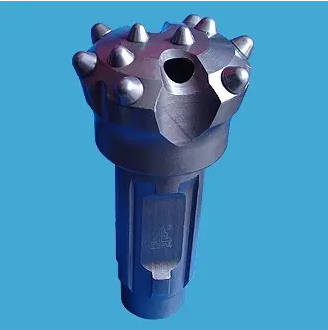How to prevent the drill from getting stuck
First, when drilling, the downhole drill bit shall not exceed 50KN, the directional well shall not exceed 100KN, and the vertical well and directional well shall not exceed 50KN. (A specific wellbore sequence can be a specific analysis data)
Second, surface drilling should ensure sufficient cyclic displacement to fully transport and remove chips. After drilling the material, do a short take-off and landing operation to ensure the wellbore is unobstructed; before the official start of drilling, inject pre-hydrated and thickened mud with a viscosity of 50-60s (the specific amount depends on the size and depth of the hole), to suspend remaining cuttings in the well and prevent bit resistance and sticking.
Third, before connecting a single drill, pay attention to the additional pulling force of the drill. In the event of a blockage, do not blindly connect individual bits, but fully circulate and adjust the mud.
Article 4: Mud purification requirements: ensure the operation and effectiveness of the solids control system. The sand content should be controlled below 0.5% using a high mesh shaker and a good centrifuge to remove undesirable solids in the drill bit.
Fifth, in order to maintain sufficient pump displacement of the drill bit, for conductive 444.5mm holes, the pump displacement must be greater than 60l/s, for conductive 311.1mm holes, the pump displacement must be greater than 55-60l/s, for conductive 241.3mm holes , the pump displacement must be greater than 35-40 l/s, 28-32l/s for a 215.9mm conductive hole.
Sixth, in oil wells where oil mixing is allowed, the oil content in the drill bit well fluid should be kept at 5-8% to meet the requirements of lubrication and anti-clogging.
Seventh, after drilling a drill bit, drill the hole once or twice, and circulate it properly, so that the drill cuttings at the bottom of the hole return to a higher level, so as to avoid sinking into the mud and the drill bit and causing the centralizer position.
Article 8, Requirements for multi-point test: The test can only be carried out after confirming the normal downhole conditions of the drill bit (such as suspension weight and circulating pump pressure).
The ninth, when drilling, if there is a large torque, the drag force and drag force will be large during the process of drilling up and down, or adhesion phenomenon occurs when connecting a single root, add plastic beads, extreme pressure lubricants, etc., to achieve The purpose of the drill bit is anti-sticking.
Article 10: During the orientation process, if the lens is relatively slow, you should pay attention to moving the drill bit frequently to prevent the drill from being stuck if it does not move for a long time. In case of supporting the drill bit pressure, lubricant should be added in time, and make it a short stroke to clear the hole and increase the lubricity of the wall.
Eleventh, before drilling in the open-hole section, the drill bit should be fully circulated and started within one gear. In the event of suction or blockage, the drill should be attached to the kelly (top drive) for grout or backstroke and never force it.
Article 12, in the inclined section of the drill bit or the torsion bearing hole, by using low speed to rise to this position, often pick up the valve, pay attention, and find that the card carries no more than 50 kn of the normal weight, and finally try to drill it out with the drilling force, Use the method of watering at intervals to destroy the keyway.
Article 13, the static time of the drill bit in the naked eye shall not exceed 5 minutes. Keep the drilling tool in motion when circulating drilling fluid, machine maintenance, or other situations that require stopping drilling.





